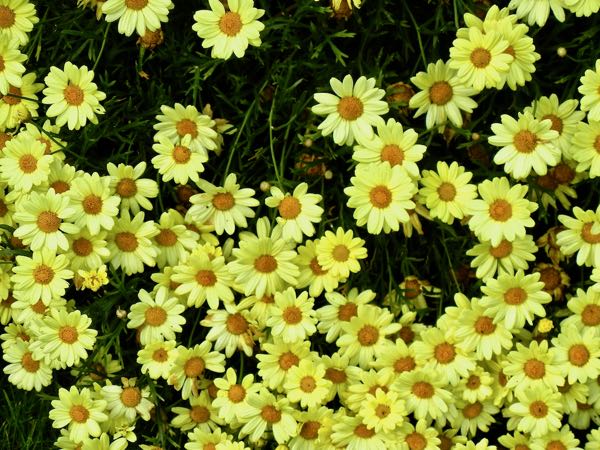Asteraceae: Exploring the Aster Family’s Floral Diversity
Asteraceae, commonly known as the Aster Family, Daisy Family, Sunflower Family, or Composite Flower, is a remarkable botanical family renowned for its vast size and diversity. With approximately 1,900 genera and an astonishing 32,000 species, it stands as one of the largest plant families on Earth. Asteraceae encompasses a wide array of plant forms, including annual and perennial herbs, shrubs, and even trees. Its diverse members can be found in various habitats worldwide, with a particular abundance in subtropical regions. The family derives its name from the Latin word “Aster,” meaning star, alluding to the star-like appearance of many of its flowers.
Asteraceae: A Tapestry of Familiar Species
The Asteraceae family comprises numerous familiar names and species that have captured our attention and admiration. From the edible lettuce and artichoke to the iconic sunflowers that turn their faces towards the sun, this family offers a rich tapestry of botanical wonders. Chrysanthemums, cosmos, marigolds, dahlias, zinnias, thistles, wormwood, and yarrow are just a few of the diverse members of Asteraceae that have captivated human imagination with their vibrant colors and striking forms.
Composite Inflorescence: The Unique Structure
One of the defining features of Asteraceae is its composite inflorescence, which gives the family its alternative name, “Composite Flower.” The flowers of Asteraceae are not singular entities but rather an arrangement of numerous small florets clustered together. These florets are surrounded by specialized leaves known as bracts, which often resemble petals and contribute to the overall attractiveness of the inflorescence. The composite nature of the flowers is what distinguishes Asteraceae from other plant families, making it instantly recognizable and diverse in its appearance.
Intriguing Floral Adaptations
Within the Asteraceae family, there are intriguing floral adaptations that contribute to the diversity and success of its members. Some species possess sepals modified into a ring of hairs, known as a pappus, which aids in seed dispersal by catching the wind or facilitating attachment to animals. This adaptation ensures the distribution and survival of the plants in various environments. The unique floret structure of Asteraceae also serves as an attraction for pollinators, ranging from bees and butterflies to flies and beetles, contributing to the family’s ecological significance.
The Versatile Asteraceae: Beyond Beauty
While the beauty and visual appeal of Asteraceae are widely appreciated, this family offers more than just ornamental value. Many species within Asteraceae possess medicinal, culinary, and economic importance. Some members, like chamomile and feverfew, have long been used in traditional medicine for their therapeutic properties. Others, such as the edible artichoke and lettuce, provide nourishment and culinary delights. Additionally, several Asteraceae species serve as important sources of natural dyes and essential oils, further highlighting the family’s versatility and utility.
Appreciating Asteraceae: A Botanical Marvel
Asteraceae stands as a testament to the incredible diversity and adaptability of the plant kingdom. With its extensive range of species, each displaying unique inflorescences, colors, and adaptations, this family has captured the fascination of botanists, gardeners, and nature enthusiasts worldwide. From meadows and gardens to forests and mountains, Asteraceae members contribute to the visual splendor of landscapes and play integral roles in ecological systems. Exploring the richness of Asteraceae allows us to appreciate the intricate beauty and remarkable evolutionary adaptations present in this extraordinary family.
Asteraceae family genera include: (A)
Aaronsohnia
Abrotanella
Acamptopappus
Acanthocephalus
Acanthocladium
Acanthodesmos
Acanthospermum
Achaetogeron
Achillea
Achnophora
Achnopogon
Achyrachaena
Achyrocline
Achyropappus
Achyrophorus
Achyroseris
Acilepidopsis
Acmella
Acomis
Acourtia
Acrisione
Acritopappus
Actinella
Actinobole
Actinoseris
Actinospermum
Actites
Adelostigma
Adenanthellum
Adenocaulon
Adenocritonia
Adenoglossa
Adenoon
Adenopappus
Adenophyllum
Adenostemma
Adenostyles
Adenothamnus
Aedesia
Aegopordon
Aequatorium
Aetheolaena
Aetheorhiza
Ageratella
Ageratina
Ageratinastrum
Ageratum
Agnorhiza
Agoseris
Agrianthus
Ainsliaea
Ajania
Ajaniopsis
Akeassia
Alatoseta
Albertinia
Aldama
Alepidocline
Alfredia
Aliella
Allagopappus
Allardia
Allittia
Alloispermum
Allopterigeron
Almutaster
Alomia
Alomiella
Alvordia
Amauria
Amauriopsis
Amberboa
Amblyocarpum
Amblyolepis
Amblyopappus
Amblysperma
Amboroa
Ambrosia
Ameghinoa
Amellus
Ammobium
Amolinia
Ampelaster
Amphiachyris
Amphidoxa
Amphiglossa
Amphipappus
Amphoricarpos
Anacantha
Anacyclus
Anaphalioides
Anaphalis
Anastraphia
Anaxeton
Ancathia
Ancistrocarphus
Anderbergia
Andryala
Anemocarpa
Angelphytum
Angianthus
Anisocarpus
Anisochaeta
Anisocoma
Anisopappus
Anisothrix
Antennaria
Anteremanthus
Anthematricaria
Anthemimatricaria
Anthemis
Antheropeas
Antillanthus
Antillia
Antiphiona
Antithrixia
Anura
Anvillea
Apalochlamys
Aphanactis
Aphanostephus
Aphyllocladus
Aplopappus
Apodocephala
Apopyros
Aposeris
Apostates
Arbelaezaster
Archibaccharis
Arctanthemum
Arctium
Arctogeron
Arctotheca
Arctotis
Argentipallium
Argyranthemum
Argyroglottis
Argyrotegium
Argyroxiphium
Arida
Aristeguietia
Arnaldoa
Arnica
Arnicastrum
Arnoglossum
Arnoseris
Arrhenechthites
Arrojadocharis
Arrowsmithia
Artemisia
Artemisiella
Artemisiopsis
Ascidiogyne
Aspilia
Asplundianthus
Aster
Asteridea
Asteriscus
Asteropsis
Asterothamnus
Astranthium
Athanasia
Atherotoma
Athrixia
Athroisma
Atractylis
Atractylodes
Atrichantha
Atrichoseris
Aucklandia
Austrobrickellia
Austrocritonia
Austroeupatorium
Austroliabum
Austrosynotis
Avellara
Axiniphyllum
Ayapana
Ayapanopsis
Aylacophora
Aztecaster


